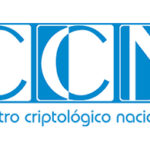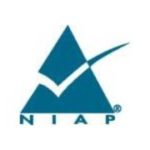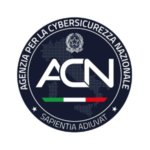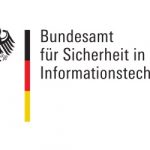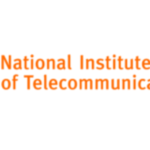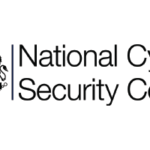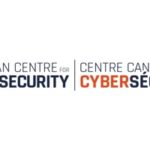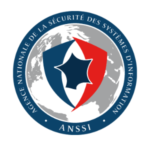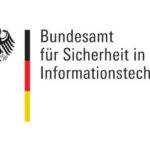Program – Full (With Tab Name)
Caption Lines HereAdvances in the Use of CC
The evolving challenges facing the international Common Criteria community and the solutions developed to meet them.
2:00 pm - 2:30 pm
Track Keynote: Why I Care About the Security of Your Car (A12a)
Traditionally verification in automotive was centered around safety, protection against unintentional problems. Now it is time to look at security, or how do we protect against intentional problems? We show... Read More
2:30 pm - 3:00 pm
Robustness Propagation Through Systems of Heterogeneous CC Components (A12b)
IoT systems become highly dynamic and configurable raising evaluation difficulties. They have multiple components with different robustness levels. Connect the components’ security functions during integration is essential. Our “Lego” methodology... Read More
Why Composite Evaluations Fail (A13a)
The topic of this presentation is the current approach for composite evaluations (where a hardware platform is evaluated separately from the software running on the hardware) and its failure to... Read More
A Compositional Certification Methodology For a COTS-Based System (A13b)
The aim of this presentation is providing an overview of the compositional security certification methodology to be used in the scope of MILS (Multiple Independent Levels of Security) evaluations and... Read More
5:00 pm - 5:30 pm
Evaluation of Distributed Products in the CC Paradigm (A13c)
Distributed products evaluated under the Common Criteria paradigm have their own set of unique challenges. The Network Device iTC has supported distributed TOEs since the release of Network Device Collaborative... Read More
9:00 am - 9:30 am
Introducing the Partner Program Certification Concept (A20a)
The FIDO Alliance, a 250+ member association developing specifications and certification programs for simpler, stronger authentication, announced back in March 2018 the expansion of its certification program to include multi-level... Read More
Basissicherheitszertifizierung (BSZ)—An Alternative Means to Achieve Assurance (A20b)
This session will present a new approach – BSZ – in the German scheme (comparable to CSPN in France) which aims at providing assurance while drastically reducing both time as... Read More
10:00 am - 10:30 am
TEE Certification: Managing Risk for Digital Services (A20c)
GlobalPlatform will present the use of Common Criteria to build a Trusted Execution Environment (TEE) security scheme. The speech will cover; Lessons learnt within the TEE ecosystem, The latest evaluation... Read More
11:30 am - 12:00 pm
Common? C’mon! (A21b)
Common? C’mon! Over the years, the CC have struggled to establish a common understanding of where the bars shall be positioned that products must clear for a certain certification level.... Read More
2:30 pm - 3:00 pm
Ballroom A
Modular PPs: The Building Blocks of Tomorrow (A22b)
The concept of PP-Modules was added to the CC in 2017. The first PP-Modules are just now being written and published for public consumption. As a new concept, vendors and... Read More
Next-Generation Tooling to Develop Protection Profiles, Automate Security Target Generation, and Support Evaluation Activity Reporting (A23b)
The speakers will showcase tooling that is freely available to the Common Criteria community on GitHub at https://github.com/commoncriteria. Major contributions include: (1) Development of a formally-defined XML schema that provides... Read More
1:00 pm-1:30 pm
1:30 pm-2:00 pm
2:00 pm-2:30 pm
Cryptographic Agility in Security Standards (A20c)
More and more standards include the requirement for cryptographic agility. Although, these are just two simple words, they have a significant impact on how systems are designed around cryptographic algorithms.... Read More
3:00 pm-3:30 pm
Application of the Common Criteria to Building Trustworthy Automotive SDLC (A21a)
The car industry’s digital transformation exposes new cybersecurity threats. In order to solve this, various standardizations on automotive cybersecurity are in progress, the most representative of which are the UNECE... Read More
3:30 pm-4:00 pm
Evolution Towards Evaluation of HW IP Blocks (A21b)
Eurosmart ITSC, the evolution towards evaluation of HW IP blocks and the importance of vulnerability analysis and pen-testing against a properly defined PP to guarantee a high-level of security assurance.
4:00 pm-4:30 pm
How ‘By-Parts’ Evaluation Achieves Certification Scheme Scalability (A21c)
Conciliating product-based security and IP-protected third-party supplies has become a cornerstone for certification schemes in many sectors. Chip manufacturers, for example, are looking to protect their IP from software providers... Read More
4:30 pm-5:00 pm
Soft IP Certification, a Glimpse into the Future (A21d)
The next CC version will incorporate the Composite evaluation methodology as it has been already successfully used for decades within the domain of smart cards and similar devices. Composition evaluations... Read More
5:30 pm-6:00 pm
Formal Models for High-Assurance: Why and How (A22a)
EAL6 certifications have recently gained terrain. With CCv4 within reach and with an extensive experience in formal evaluations, the French and German schemes are proposing a formal methods usage approach... Read More
6:00 pm-6:30 pm
Qualcomm’s View on EUCC and Importance of Composition and Re-Use in Certification (A22b)
Session Description TBA
6:30 pm-7:00 pm
Cloud and Common Criteria: NWI ISO Proposal (A22c)
The Common Criteria has been a framework for product evaluation of security functions since its inception in the late 1990s. As DevOps became the trend for development of agile cloud... Read More
2:45 pm
Good, Fast, Cheap: Why Not All Three? (A12a)
I know, I know: some of us come to the ICCC to complain that the CC only meets 1, maybe 2 of these goals. For possibly more years than we... Read More
2:45 pm
Security: The Second Wave of Convergence (A12b)
During the 1990’s the introduction of the internet, web browser, email and resulting electronic services led to an initial commercialization wave of crypto and security technologies. During this time security... Read More
Confidential Security Evaluation Environment (A13a)
Is it possible to establish a confidential assurance environment that will allow independent 3rd party evaluators to conduct software security analysis of vendor proprietary (sensitive) software, while preserving the confidentiality... Read More
4:15 pm
Smartcard and Similar Devices Site Audits and Cloud Applications (A13b)
Within the smartcard and similar devices domain, the site audit must complain to MSSR (Minimum Site Security Requirements). Some of the developer applications to be considered are no more hosted... Read More
ISCI WG1—High-Secure Remote Work—The Response to the Post-COVID Hybrid Mode Demand (A13c)
The COVID-19 pandemic crisis that hit the world in 2020, forced many companies to enable remote working opportunities to continue their operation while minimizing the amount of staff that had... Read More
9:00 am
When the CCMB is Knocking at Your Door (A20a)
As one of the first iTCs, the Network iTC has received a list of comments from the Common Criteria Maintenance Board (CCMB) on its supporting documents for the NDcPP and... Read More
9:30 am
CCCAB Tool—Making CABs Life Easy—Chapter 2 (A30b)
CCCAB (Common Criteria Conformity Assessment Body) Tool is a unique framework that will allow Common Criteria CABs to smooth the certification process for ICT products, reducing the cost and time... Read More
10:00 am
Update on Transition Guide 22216 (A20c)
New concepts and changes in the 2022 edition of the CC standard. CC revision by ISO has generated lot of expectations since the process started back in 2016. With the... Read More
11:00 am
Pre-Silicon evaluation will save EUCC (A21a)
In this presentation the speaker will address one of the main challenges of CC evaluation/certification of mobile SOC’s and integrated SE’s. The current timelines for testing of the SOC are... Read More
11:30 am
Keep the Code But Not the Flaws: A New Approach to Source Code Analysis (A21b)
In recent years, the CC community has intensely discussed the pros and cons of source code analysis as part of CC evaluations. There have been numerous concerns about losing intellectual... Read More
12:00 pm
Automation Update: Automating Towards a Better Tomorrow (A21c)
Generating and validating a security target has historically been a thankless, tedious, and error prone endeavor. NIAP’s automation effort strives to turn this months-long slog into a pain free guided... Read More
1:30 pm
How to Manage Evaluations for Higher EALs? (A22a)
ITSEF of Łukasiewicz-EMAG Institute has finished the first pilot evaluation for software TOE (EAL 4+) within the Polish Common Criteria evaluation scheme. The Polish evaluation scheme resulted from an R&D... Read More
2:00 pm
Developing an EAL2 Protection Profile and an Evaluation Methodology Document for Prepare and Measure Quantum Key Distribution Modules (A22b)
Quantum Key Distribution (QKD), which enables information theoretically secure key establishment, is about to be put into practical use. Security evaluation and certification of QKD modules are under standardization process... Read More
2:30 pm
Threats and Challenges for AI/ML Based Solutions (A22c)
AI/ML based solutions provide machines with intelligence where these solutions have the ability to process input from big data sets and provide outcomes. This is basically a prediction based on... Read More
3:30 pm
Applying the CC Framework for Soft-IP Evaluation Reuse (A23a)
Soft-IP cores facilitate chip development with reusable hardware blocks. Reuse of Soft-IP evaluation results has been experimented with, but there is no widely accepted practice. The Eurosmart Soft-IP taskforce prepares... Read More
4:00 pm
Guidance for Support of Evaluation and Certification of PP-0117 Compliant Integrated Secure Elements (A23b)
To support a smooth and efficient evaluation of Integrated Secure Elements compliant to PP-0117 (also called the Secure Sub-System (3S) in SoC), ISCI-WG1 and JHAS have collaborated in developing several... Read More
4:30 pm
Cascading Evaluations—Can Downstream Vendors Benefit from Reference Evaluations (A23c)
Starting in 2019 with Android 9, Google started to evaluate Pixel devices to the requirements of the PP_MDF. While this directly supports Google in showing Pixel devices as capable of... Read More
9:00 am
Taking the Guess Work out of Entropy Assessments! (A30a)
This presentation will outline the required steps to assess an entropy source including design analysis, entropy justification, and health testing to meet Common Criteria requirements from the NDcPP based on... Read More
10:00 am
n-doc. An Open Source Platform for CC-Documentation (A30c)
n-doc is an open source platform for creating developer CC documentation. n-doc produces high quality PDF files with generated hyperlinks for easy navigation. n-doc consists of LaTeX macros, Lua programs,... Read More
2:15 pm
Spanish Initiatives on the Security Evaluation and Certification of Biometric Products (A12a)
Common Criteria and LINCE (i.e., Essential National Security Certification) are the two evaluation methodologies used by the Spanish Scheme to certify the security of IT products. However, these methodologies are... Read More
11:00 am
Mobility in Cloudy Weather: Evaluating Cloud Products using NIAP’s Mobile Device Management PP (A21a)
On October 25, NIAP’s first public Cloud evaluation “kicked-off” – Microsoft Intune conforming to NIAP’s Mobile Device Management Protection Profile version 4.0 and Mobile Device Management Agent PP module version... Read More
Panel Discussion: Common Criteria in the Cloud (A21b)
An expert discussion on the status and outlook for Common Criteria in the cloud.
1:30 pm
Challenges in the Adoption of CC:2022 for Protection Profiles, PP Modules and Functional Packages (A22a)
The new version of Common Criteria includes new entities in its conceptual model, most of them based on the evolution of the NIAP’s evaluations (PP configurations, PP modules, Functional Packages,... Read More
2:00 pm
PP-Modules and the Growth of Requirements—Will Decomposition Be a Boon or a Bane? (A22b)
PP-Modules and Functional Packages ensure common requirements across different product types, which is great and as it should be. Yet at the same time, this has led to an increase... Read More
2:30 pm
3:30 pm
Implementing Life Cycle & Supply Chain Controllability in SME (A23a)
This talk discusses the implementation of a measurable life cycle in a medium-sized company specializing in high-tech secure communication solutions. The company has developed and implemented models, processes, and tools... Read More
4:00 pm
Results and Experience of the First Pilot on Patch Management (ALC_PAM) in BSI (A23b)
A high level of trustworthiness in CC certifications require high evaluation efforts, since proven security can only be based on knowledge and facts, not on trust. An unjustified criticism of... Read More
9:00 am
Common Criteria as a Way to Secure Quantum Communication in Europe (A30a)
In their talk, the speakers will discuss how the implementation of Common Criteria will contribute to the growth of Europe’s industrial ecosystem for quantum communication technologies and systems. They will... Read More
9:30 am
The Well-Documented Code: The Case for Generating Design Documentation from the Source Code (A30b)
The typical developer will document their source code reasonably well, at times substituting code comments for formal documentation entirely. Still, little effort is taken to generate documentation for evaluations from... Read More
10:00 am
Certification Requirements of a Common Criteria Certification of a General Purpose Operating System Vendor (A30c)
Meeting Customers Expectations and Requirements in times of dramatically changing legal and technological environment is not easy. Upcoming legislation and regulation changes in Europe meet changes in the United States... Read More
SBOM the Good, the Bad, and the Ugly (A31a)
Over the past two years, we have seen numerous failings of products due to issues within their software supply chain. Unfortunately, supply chains have become a key attack vector. Supply... Read More
11:15 am
Common Criteria, the Building Blocks for Commerical Solutions for Classified (CSfC) (A31b)
Overview of the Commercial Solutions for Classified (CSfC) program’s structure and value to its end customer community, and this program’s reliance on layered security provided by multiple CC certified products.... Read More
11:45 am
DoDIN APL a Logical Extension to the Common Criteria Evaluation (A31c)
Overview the Department of Defense Information Network (DoDIN) Approved Products List (APL) certification as a DoD procurement requirement for hardware products. Compared and contrasted the objectives of CC and DODIN... Read More
Panel Discussion: Vulnerability Handling and Disclosure, Assurance Continuity Processes (A12a)
This expert discussion covers the status and outlook of vulnerability handling. Common Criteria (CC) addresses vulnerability handling through a combination of security requirements and evaluation activities. CC primarily focuses on... Read More
4:00 pm
Confidential Computing and Common Criteria (A13a)
Confidential computing provides protection to data during processing, particularly for data being processed in a cloud or mobile environment. Beyond that, the definitions vary from vendor to vendor. This talk... Read More
4:30 pm
Software Composition Analysis – Gold Standard for Supply Chain Security, Revisited (A13b)
Tracking known vulnerabilities in open-source libraries as Common Vulnerabilities and Exposures (CVE), and distribution via special databases such as those hosted by MITRE, has been the de-facto standard for supply... Read More
5:00 pm
SBOMS: BOMS for Vulnerability Tracking. Boom or Bust (A13c)
NIAP started a SBOM pilot on 1st March 2024 (Policy 30) for NIAP’s Application Software Protection Profile. The purpose of this project is the usage of SBOMs for vulnerability analysis... Read More
9:00 am
Evaluation of AI-Based Technology (A20a)
A project on the evaluation of AI-based technology has been accepted in ISO/IEC JTC 1 SC 27 Information security, cybersecurity, and privacy protection WG3 – Security Evaluation, Testing and Specification.... Read More
Panel Discussion: Everything AI and Common Criteria (A20b)
This expert panel covers the intersection of artificial intelligence and Common Criteria. AI systems introduce unique security risks like adversarial attacks that manipulate training data or exploit vulnerabilities in the... Read More
11:00 am
IA in the Age of AI (A21a)
Information assurance (IA) of confidentiality, integrity, accountability, and privacy is achieved by third-party evaluation based on internationally accepted security standards such as Common Criteria. This talk tackles how IA methodology... Read More
12:00 pm
High Assurance Evaluations of Software-Only TOES (A21c)
High assurance evaluation of TOEs not included in known technical domains (Smartcards or security boxes) faces the additional challenge of creating evaluation, attack, and test methodologies. These challenges are greater... Read More
1:30 pm
Common Criteria in the Cloud, Is This the End or Just the Beginning? (A22a)
The Common Criteria in the Cloud Technical Community (CCitC TC) has authored guidance for protection profile authors who wish to expand the scope of their PPs to add cloud platforms.... Read More
2:00 pm
Extending the DBMS CPP: Embracing Cloud Architectures (A22b)
This talk explores the ongoing efforts to evolve and enhance the collaborative Protection Profile for Database Management Systems (cPP_DBMS) to support cloud architectures. It will delve into the key changes... Read More
2:30 pm
Impact of the Adoption of Cloud Services for Code Review on ALC_DVS and Attack Potential (A22c)
Tools for code review are commonly used to allow developers to identify bugs and bad programming habits. They are often provided as a service through a third-party cloud infrastructure, posing... Read More
3:30 pm
Cloud Formations: NIAP Cloud Certifications and the Way Forward (A23a)
NIAP is in the process of certifying its first Cloud product using the Mobile Device Management (MDM) Protection Profile. This talk will discuss the challenges of this certification (from a... Read More
Panel Discussion: How Will Native Cloud Migration Affect CC Certification? (A23b)
This expert panel surveys the challenges posed by the trend to native cloud migration. Under native cloud migration, applications are revamped to truly function in the cloud environment. Native cloud... Read More
9:30 am
Navigating the Future: Impact of Post-Quantum Cryptography in Common Criteria (A30b)
This talk will explore the integration of post-quantum cryptography into the Common Criteria framework. It examines evolving CC evaluation criteria, algorithmic diversity, and certification processes amidst the quantum computing revolution.... Read More
10:00 am
Return of Experience of ITSEF Challenges: A Concrete Example (A30c)
ANSSI, as a certification body, licenses their ITSEFs. Along the process of licensing the ITSEFs (including audits), challenges are regularly organized, which can be based on hardware, software, or crypto... Read More
11:00 am
Challenges in the Transition to CC:2022—Update of Protection Profiles (A31a)
With the new version of Common Criteria in force, there is a need to align the Protection Profiles contents used in certification. This talk discusses the main aspects to be... Read More
11:30 am
Enhancing Common Criteria Evaluations: The Potential and Risks of AI Integration (A31b)
Integrating AI into Common Criteria (CC) evaluations could significantly benefit vendors and laboratories by streamlining processes and improving accuracy. Vendors could use AI for pre-assessment, ensuring products meet security requirements... Read More
Assurance
Meeting the challenge of maintaining assurance in today's accelerated development environment.
3:00 pm-3:30 pm
Reading Between the Lines, A Biometric Acceptance in Malaysia Voyage (S11a)
Malaysian has been using biometric fingerprint since 2001 when MyKAD first introduced. In the next few years, we envision a whopping change in trend since the other biometric modalities have... Read More
3:30 pm-4:00 pm
Outbreak Impact in CC (S11b)
COVID-19 outbreak has brought difficulties and new challenges to the entire industry, including CC evaluations and certifications. Maintaining the CCRA terms in this new pandemic scenario is crucial, for which... Read More
4:00 pm-4:30 pm
End-to-End Side-Channel Detection Methodology (S11c)
Side-channel evaluation relies, for CC labs, on the lab expertise. However, owing to the dissemination of SCA requirements, a formal methodology is welcomed. Pioneering work done in ISO/IEC 17825 —... Read More
4:30 pm-5:00 pm
JHAS Rating Approach and Assessment of SW Vulnerabilities—All ITSEFs Will Become Hackers (S11d)
We start from a question: How do we rate overall attack resistance level of a solution which is subjected to software exploitation attacks? In this presentation, we discuss solutions currently... Read More
5:30 pm-6:00 pm
Towards Creating an Extension for Patch Management for ISO/IEC 15408 and ISO/IEC 18045 (S12a)
Common Criteria (CC) or ISO/IEC 15408 allows the certification of the assurance of IT products. The standard has proven to be flexible for high-security use-cases especially for secure elements, security... Read More
6:00 pm-6:30 pm
The Changes of Change Management (S12b)
Evolution of the management of the changes in Common Criteria through the work of the ISCI WG1 “Changing certified products” subgroup and Thematic Group 5: “Continuity assurance and handling of... Read More
6:30 pm-7:00 pm
Results on Automating National Information Assurance Partnership (NIAP) Requirements Testing for Mobile App Vetting (S12c)
U.S. government agencies need to quickly and affordably assess whether their mobile apps are compliant to NIAP’s Protection Profile for Application Software. A pilot conducted by DHS proved automated app-vetting... Read More
CC in New Domains
3:45 pm
Automotive Cybersecurity: Could You Trust the Connected Car? (D13a)
The Internet of Things (IoT) has the potential to connect everything with everything else even in the automotive sector: Vehicles are increasingly connected to backend services and corresponding business models.... Read More
4:15 pm
CCC Digital Key: A Worldwide Standard That Enables Our Mobile Devices to Replace Traditional Keys to Give Access to Our Vehicles (D13b)
The Car Connectivity Consortium (CCC) consisting of over 150 members has developed a protection protocol to securely store, authenticate, and share digital keys in mobile devices and vehicles. The CCC... Read More
4:45 pm
Common Criteria in the Automotive Security Regulatory Domain—CC-Based Automotive Risk Assessment (D13c)
Since July 2022, vehicle manufacturers who aim to place their new vehicles in countries including the EU, UK, Japan, South Korea and others, need to have their vehicles type-approved in... Read More
9:00 am
Developing Common Criteria Certification for 3D Printing Equipment (D20a)
An important aspect of standards work for 3D printing is the aspect of software security as it pertains to the Digital Additive Manufacturing process thread. Currently there is internationally recognized... Read More
9:30 am
Protection Profile for Quantum Computing-as-a-Service (D20b)
Presented is an advanced application of the Common Criteria that has led to the development of a Protection Profile for a Quantum Computer. Specifically, we address the security requirements that... Read More
Common Criteria and Quantum Crypto (D20c)
Common Criteria in its over two decades existence has seen many technology changes. Quantum crypto is just one of them – though could be a major one. While Quantum crypto... Read More
The Evolution of Relational Database Management System (RDBMS) Certifications from On-Prem to Cloud—An Overdue Demand (D21a)
Looking at comparisons of on-premises and cloud revenue for a Database Management System (DBMS) published by Gartner et al., you will see a dramatic push from on-premises to cloud over... Read More
11:30 am
Cloud HSM for Governments Enabled by CC (D21b)
Hardware Security Modules (HSMs) become increasingly important in providing the root of trust for a variety of digital services. Today, HSMs safeguard multiple markets from banking, telecom and enterprise to... Read More
12:00 pm
Lightweight Certification: From a Lab Point of View (D21c)
The interest for lightweight certifications is increased by the industry in order to provide “quicker” assurance for its products. This talk aims to give a panorama on the different lightweight... Read More
1:30 pm
Evaluation of Presentation Attack Detection Mechanisms in Biometric Systems (D22a)
Presentation attacks are a severe threat to biometric systems—artificial fingers fool fingerprint sensors, photographs printed on paper bypass facial recognition systems. Presentation Attack Detection (PAD) mechanisms are often in place,... Read More
2:00 pm
Presentation of the Biometric Evaluation Procedure in Spain (D22b)
There are currently a large number of biometric solutions on the market, which are increasingly being applied in key sectors such as banking, public administration and insurance. In Spain, last... Read More
2:30 pm
Biometrics Security iTC Update (D22c)
An update on the current status of the BIO-iTC. The two main topics will be the ongoing work on defining requirements for Continuous Multifactor Authentication and updates related to the... Read More
2:30 pm
Certification Considerations for Open Source; The OpenTitan Project (D23a)
The OpenTitan project is the first transparently developed silicon root of trust (RoT) reference design – for both discrete and integrated solutions. We will describe the unique benefits of openness... Read More
Panel Discussion: New Certification Schemes Based on CC (D23b)
This expert panel discussion will focus on the growing problem of multiplicity of standards.
10:45 am
Building Resilience into Mobile Network Equipment Security (A31a)
The security of mobile networks is as important as it’s ever been and with the advent of 5G, networks consider it part of critical infrastructure. Equipment Vendor Manufacturers looking to... Read More
11:15 am
Mobile Device Evaluation? Which PP? (A31b)
Protection Profile for Mobile Device Fundamentals has been used for many years in CC evaluations. ETSI has recently published a PP for Consumer Mobile Device (CMD). How does that affect... Read More
11:45 am
Ch-ch-ch-ch-changes! Impact of Algorithm Transitions on PP-Based CC Evaluations (A31c)
FIPS Approved and NIST recommended cryptographic algorithms are integral to a successful PP-based Common Criteria evaluation. Several impactful NIST algorithm transitions are taking place which could add significant risk to... Read More
1:30 pm
Innovating CC: The Use of ChatGPT in Drafting Protection Profiles and Security Targets (D22a)
Imagine a scenario where one is tasked with drafting a Protection Profile (PP) or Security Target (ST) that must align with the rigorous Common Criteria (CC) standards. The process involves... Read More
2:00 pm
Challenge of CC in New Technology: Experience in Evaluating AI Using Common Criteria (D22b)
Artificial Intelligence is taking the world like a storm. AI is also very different from conventional Common Criteria evaluations where it is mainly focused on products. This talk explores the... Read More
2:30 pm
Evaluation of Evaluation Facilities (D22c)
The qualification of the lab which performs a CC evaluation is absolutely crucial for the level of assurance you will get. The International Common Criteria Recognition Agreement (CCRA) and the... Read More
3:30 pm
Dedicated Security Components iTC Update (D23a)
This talk will provide an update on the work of the DSC iTC over the last year. The topics will include: – Current status of updates to feedback from the... Read More
4:00 pm
MDM Server Certification Without NIAP’s MDM PP (D23b)
There is a noticeable rise in the demand for certifications of MDM Trusted Servers against BSI-CC-PP-0115/0116 on EAL4+(ALC_FLR.3), which aligns with EUCC requirements. The following points will be addressed during... Read More
4:30 pm
Cybersecurity Maturity Model Certification (CMMC) Overview (D23c)
An overview of the supply chain cybersecurity program of the US Department of Defense.
Cybersecurity Evaluation for Open RAN Components of 5G System (D30a)
Open RAN technology (and in general multi-vendor mobile network) is a novel approach for the building of mobile networks that assumes the open definition of interfaces for the separation of... Read More
Adaptation of Common Criteria Methodology to the Security Evaluation of Industrial Automation and Controls Systems – Theory Basics and Case Study (D30b)
This talk shows how CC and CEM can be adapted to the security evaluation of industrial automation and control systems (IACS). The IACS are often used in critical infrastructures like... Read More
10:00 am
Bridging the Gap in IoT Certification: A Vendor Analysis When Stepping Up from SESIP to Common Criteria (D30c)
This talk examines the transition from the Security Evaluation for Secure IoT Platforms (SESIP) to the more stringent Common Criteria, focusing on the challenges faced by vendors. While a single... Read More
11:00 am
Mobile Device Fundamentals Vs Consumer Mobile Device – Where Do We Go From Here? (D21a)
ETSI has published TS 103 732-1, the Consumer Mobile Device PP, along with a set of PP-Modules (TS 103 732-2 Biometrics, TS 103 732-3 Multi-user, TS 103 732-4 Preloaded Apps,... Read More
11:30 am
Optimizing EUICC Certification Under ENISA’s EU5G Activities (D21b)
Under ENISA’s EU5G activities, eUICC certification in the EUCC scheme has been optimized to streamline processes while ensuring high security. These improvements include streamlined applet certification, alignment with the GSMA... Read More
12:00 pm
Simplifying Certification of Digital ID Applets With the Cryptographic Service Provider (CSP) (D21c)
With the implementation of the European Union’s Digital Identity Wallet (EUDI) underway, soon every person living in the EU will have a digital identity applet stored on their smartphone. This... Read More
1:30 pm
Leveraging EN 17927 for Streamlined IoT Security Compliance in the Face of Evolving EU Regulations (D22a)
In today’s rapidly evolving regulatory landscape, the need for robust IoT security has never been more critical. This talk will delve into the pivotal role of EN 17927 (Security Evaluation... Read More
2:00 pm
How Common Criteria Can Be Optimized to Develop More Efficient Schemes (D22b)
The Common Criteria standard is often criticized for its costliness, time-consuming nature, excessive documentation requirements, and lack of objectivity. In this talk, the authors will demonstrate how the standard can... Read More
2:30 pm
Methodology for Vulnerability Assessment in 5G Networks – the RAN Module Case Study (D22c)
Open Radio Access Network (Open-RAN) technology introduces disaggregation of RAN network functions, offering enhanced flexibility for extending hardware and software. The network may then be built through the integration of... Read More
9:00 am
A Survey of Cryptographic Algorithm Usage (A30a)
The choice of cryptographic algorithms and corresponding key lengths is a challenge when designing a product. There are many national and industry standards, as well as common practices to be... Read More
Meeting Customer Requirements
Improving engagement between the Common Criteria technical community and Government procurement policy makers.
PP v/s EAL: Where Does Security Assurance Reside? (M22b)
Over the last few years Common Criteria has gone through a major change, some would say an upheaval. With the move to PP/cPP based exact conformance paradigm, two distinct schools... Read More
4:00 pm-4:30 pm
FIA’s OTP Security—a Common Criteria Approach (M01a )
The FIA (Fédération Internationale de l’Automobile) is currently publishing a report of the “On-Board Telematics Platform (OTP) Security”. It addresses the importance for Mobility Clubs and Independent Service Providers (ISP)... Read More
4:30 pm-5:00 pm
The Road to Smart Meter Security Requirements Acceptance (M01b)
CEN/CENELEC/ETSI and Smart Meter developers (ESMIG) started 7 years ago an initiative that resulted in a certified smart meter Protection Profile based on requirements from various countries and in line... Read More
5:00 pm-5:30 pm
eHealth: Infrastructure and Evaluation in Germany (M01c )
Digitalization of health systems is an ongoing process worldwide. This presentation gives an overview of the German eHealth scheme which is currently being established. Interaction of technical components (smart cards... Read More
6:00 pm-6:30 pm
FIPS vs CC: What Drives Certification Demand for HSMs? (M02a)
Product security certifications in today’s ever-changing environment are impacting traditional markets. Common Criteria certification demand has soared in the European regulated markets for digital signature (eIDAS), deprecation of NIST algorithms... Read More
6:30 pm-7:00 pm
Protection Profile for SaaS Multi-Tenant Cryptographic Isolation (M02b)
Presented is a customer experience journey in creating a draft Protection Profile for multi-tenant Software-as-a-Service (SaaS) applications running in a commercial public cloud. We define the security problem, threats, and... Read More
1:00 pm-1:30 pm
Track Keynote: Meeting Customer Requirements with Unified Verification Standard (M10a)
Session Description TBA
1:30 pm-2:00 pm
Trust Model for Verticals Over 5G (M10b)
5G systems support a wide range of verticals leading to different sets of security requirements. Some of these can be communalized, while others are exclusive to specific usages or associated... Read More
2:00 pm-2:30 pm
You want what? By when?? …. Ok! (M10c)
We were already in an era where new TOEs must be on the market like clockwork: this year’s phone must be evaluated, certified, and production must have started, before the... Read More
9:00 am
Vulnerability Handling on Certified Solutions (M30a)
In CSA, the issue of addressing vulnerability handling for Certified Solutions holds an important role, as stated in Articles 51,54 and 55. These provisions are indicative of the strong importance... Read More
Panel Discussion: Vulnerability Handling and Disclosure (M30b)
An expert discussion on vulnerability handling. Topics include legal issues, how to monitor, time limits, complexity of handling, and the needs of consumers.
10:45 am
Satisfying the Requirements of a Multi-Scheme Security Certification Effort—Striking Just the Right Balance (M31a)
Some products seem to defy certification when they are validated against a single security evaluation scheme. This situation becomes more difficult when validation against a second scheme is required and... Read More
Is Automation Necessary for the CC Survival? (M31b)
The use of different automation tools in Common Criteria is a reality. In recent years, it has been demonstrated that the capacity to take on a large number of Common... Read More
Panel Discussion: Vulnerability Handling and Disclosure, Assurance Continuity Processes (M12a)
Expert discussion on the status and outlook of vulnerability handling.
1:30 pm
Customer-Provided Entropy Provision for Virtual Machines in Hypervisor Environments (M22a)
Virtualized environments rely on high-quality entropy for generating cryptographic keys and securing sensitive data. In many cases, the entropy sources within the VM or sourced from hypervisor may be of... Read More
Panel Discussion: Evolution of the Cryptographic Standards Ecosystem (M22b)
Expert discussion on the status and outlook of cryptographic standards.
3:30 pm
Post-Quantum vs. AVA_VAN (M23a)
Can a Dilithium signing component meet the AVA_VAN.5 security level? At this level, the evaluating laboratory operates under “gloves off” conditions, thoroughly assessing the device’s security against a highly capable... Read More
4:00 pm
Post Quantum Cryptography: A Quintessential Quagmire (M23b)
Quantum computing is on the horizon, algorithm choices are crystalizing, and vendors are facing a forced trek through a lattice of uncertainty. This talk will discuss the quantum resistant algorithms... Read More
4:30 pm
Developing the Evaluation Methodology Document for Prepare and Measure Quantum Key Distribution Modules (M23c)
The actual operation of quantum key distribution (QKD), which is necessary for realizing information-theoretically secure key sharing, is about to begin in various countries. As part of the activities of... Read More
4:00 pm
Applying the CC Framework for Soft-IP Evaluation Reuse (M13a)
Soft-IP cores facilitate chip development with reusable hardware blocks. Reuse of Soft-IP evaluation results has been experimented with, but there is no widely accepted practice. As presented two years ago,... Read More
4:00 pm
EIDAS 2.0 – Cybersecurity Requirements for Remote Digital Signatures as a Service (M13b)
With the adoption of the European Regulation eIDAS 2.0, a legal framework of requirements for electronic signatures is established, introducing the notion of electronic signatures created using a remote signature... Read More
5:00 pm
Reconciling Customer Procurement Requirements From Other Regulatory Areas With CC (M13c)
Common Criteria’s biggest benefit for vendors is the mutual agreement between signatory countries. This enables vendors to certify once and sell in multiple geographies. One of the biggest pain points... Read More
5:00 pm
CVSS as a Tool for Attack Potential Calculation (M13c)
CVSS is a widespread vulnerability score model adopted by many known vulnerability databases and it could provide a useful aid to the evaluator for CC evaluation at AVA_VAN.2 or higher.... Read More
9:00 am
Java Card Protection Profile Update to CC:2022 and the Development of a Multi-Assurance Protection Profile (M20a)
The first certification of the Java Card protection profile was in 2003. Since then, it has been regularly updated to reflect changes in both Common Criteria and the Java Card... Read More
9:30 am
Reusing CC for ISO21434 Certification (M20b)
In this joint talk with Infineon Technologies AG, the reuse of ISO 15408 Common Criteria evaluation evidence for ISO 21434 Road Vehicles Cybersecurity certification will be explored. The alignment of... Read More
10:00 am
Automotive Safety and Cybersecurity Convergence With CC AVA_VAN (M20c)
The Functional Safety and Cybersecurity requirements originating from the acclaimed standards ISO 26262 and ISO/SAE 21434 go hand in hand in many aspects such as the process phase V-cycle for... Read More
3:30 pm
Using Common Criteria/EUCC to Meet CRA (M23a)
The European Cybersecurity Resilience Act (CRA) establishes a set of cybersecurity requirements for products with digital elements and obligations for their manufacturers as a mandatory baseline to place these products... Read More
4:00 pm
The Multi Assurance Paradigm Evaluation in EUCC (M23b)
The CC:2022 multi-assurance evaluation paradigm, which allows different assurance requirements for different parts of the TSF (sub-TSFs), can be adopted in the context of EUCC. EUCC certificates will mostly be... Read More
4:30 pm
Trucks on and Off the Track: On Evaluation of Motion Sensors (M23c)
This talk presents considerations and conclusions related to the evaluation of motion sensors augmented by AVA_VAN.5, according to the Common Criteria Protection Profile for Digital Tachograph – Motion Sensor (MS... Read More
9:00 am
It Takes a Village: A Day in the Life of a Certification Engineer (M30a)
Certifications are hard. Driving a software development company’s compliance and cybersecurity initiatives can be challenging as it requires a wide variety of skillsets and involves participation and buy-in from the... Read More
9:30 am
Navigating the Certification Landscape: Insights for Private CABS (M30b)
As the European Union Common Criteria (EUCC) framework continues to gain prominence as a benchmark for cybersecurity evaluation and certification, the demand for private Certification Bodies (CABs) within the EUCC... Read More
10:00 am
Navigate OT Cybersecurity Risks in the Era of AI and Digital Transformation (M30c)
In the rapidly evolving landscape of the digital age, the integration of Artificial Intelligence (AI) and digital transformation initiatives has revolutionized operational technology (OT) systems. However, this convergence also introduces... Read More
11:00 am
EUCC Accreditation: The Complexity of Managing ITSEF’s Technical Competence. How To (M31a)
EUCC has brought new requirements for the accreditation of Conformity Assessment Bodies, particularly those specified in a State of the Art (SotA) mandatory document published along with the regulation, which... Read More
11:30 am
EUCC – Ready for Software Evaluations? (M31b)
EUCC has the potential to be a major milestone for the harmonized application of CC for a large market. During the last five years while EUCC was being prepared, the... Read More
12:00 pm
Statistical Bounds to Expedite (High-Order) Side-Channel Attacks (M31c)
Side-channel analyses are well-known threats to assets contained in Targets of Evaluation (ToE). They are very often contemplated in AVA_VAN evaluation. The reason is that such attacks are stealthy: millions... Read More
Plenary Presentation
Presentations scheduled for participation by all attendees.
1:00 pm
1:05 pm-1:35 pm
Keynote: Securing the Edge: The Role of Third-Party Security Verification (P00b)
Connected devices are becoming a major part of all our lives. Dedicated connected devices are becoming more and more use case based, targeting for example, industrial applications, household applications, automated... Read More
1:35 pm
1:50 pm
2:05 pm
Panel Discussion on EUCC and CCRA: Market Impact (P00f)
Session description TBA
5:30 pm-6:00 pm
SGS and Graz University of Technology Announcing Launch of New Cybersecurity Research Center (P01d)
In 2019, SGS and Graz University of Technology (TU Graz) announced the Cybersecurity Campus Graz, where SGS then located its global headquarter for Cybersecurity Services next to TU Graz’ Cybersecurity... Read More
2:30 pm-3:00 pm
atsec – All You Would be Looking for(P10d)
Join atsec colleagues from Germany, Italy, Sweden, China and the US for an overview of atsec’s global InfoSec service offerings with a special focus on Common Criteria for the ICCC.... Read More
9:15 am
Government Keynote Address: Certification as a Key Element for Cybersecurity (P10b)
Luis Jimenez was unable to attend. Jose Miguel Loste from the Centro Criptologico Nacional of Spain presented.
11:30 am
CCUF Update (P11c)
This is on behalf of the 2022 – 2024 CCUF MG Chair. The Common Criteria User Forum provide a voice and communications channel among the CC community including the vendors,... Read More
Plenary Panel Discussion: EUCC (P11d)
Expert discussion on the status and outlook for EUCC.
9:10 am
Government Keynote: Qatar’s Vision for Supply Chain Cyber Resilience (P10b)
The State of Qatar aims to advance supply chain cyber resilience at a national level by proactively identifying and addressing key risk areas within the cyber security supply chain. This... Read More
9:40 am
9:55 am
10:10 am
11:10 am
Industry Keynote: Vulnerability Management and Compliance (P11a)
Certified products do not contain known vulnerabilities is a common theme for many regulatory frameworks including Common Criteria. As new vulnerabilities pop up all the time, it makes evaluations of... Read More
11:45 am
CCUF Update (P11c)
The Common Criteria User Forum provides a voice and communications channel among the CC community, including vendors, consultants, testing laboratories, Common Criteria organizational committees, national schemes, policymakers, and other interested... Read More
Plenary Panel Discussion: EUCC (P11d)
This expert discussion covers the status and outlook for EUCC.
Updates from Schemes & iTCs
Updates from the Common Criteria Scheme commentators. ITCs will provide progress reports, sharing roadmaps and lessons learnt.
Track Keynote: How Europe’s Cyber Security Act and CCRA Can Be Best Friends (U12a)
Currently Europe implements a Cyber Security Act (CSA) which amongst others sets up a European IT-Security certification framework. It is more than an educated guess that the first implementation of... Read More
2:30 pm - 3:00 pm
Ballroom C
Brexit, the EU Cyber Security Act, and Product Assurance in UK and the EU—An Update (U12b)
Following on from a presentation at ICMC 2018, this presentation will provide an update on progress with Brexit, the development of ENISA under the EU cyber security act; and the... Read More
6:00 pm-6:30 pm
Biometrics Security iTC Update (U02a)
An update on the current status of the BIO-iTC, with a focus on the PAD toolboxes and how the requirements compare to the FIDO Alliance Biometric Certification program. The presentation... Read More
6:30 pm-7:00 pm
Network Device iTC Update (U02b)
The presentation includes an update of the ND iTC since the last ICCC, latest NDcPP and module postings, where we are today and what we are planning.
7:00 pm-7:30 pm
1:00 pm-1:30 pm
1:30 pm-2:00 pm
Hardcopy Devices iTC Update (U10b)
The purpose of the Hardcopy Devices collaborative protection profile (HCD cPP) is to facilitate efficient procurement of Commercial Off-The-Shelf product using the Common Criteria methodology for information technology security evaluation.... Read More
2:00 pm-2:30 pm CET
KSO3C: Polish Schema for Evaluation and Certification Compliant with Common Criteria—Last Step Towards Recognition (U10c)
The project “National schema for the security and privacy evaluation and certification of IT products and systems compliant with Common Criteria” (KSO3C) is being implemented by a scientific consortium composed... Read More
3:00 pm-3:30 pm
Spanish Scheme Update (U11a)
This presentation by the Certification Body of the CCN is oriented to provide an update of the certification activities of the Spanish Scheme. In the last two years, the scheme... Read More
3:30 pm-4:00 pm
ISCI-WG1 Contribution to the Common Criteria Methodology Improvement and Usage (U11b)
ISCI-WG1 is a key contributor in the Common Criteria (CC) and SOG-IS certification ecosystem. This talk is about ISCI-WG1 2020 achievements and how to tackle new challenges. Currently, ISCI-WG1 includes... Read More
4:00 pm-4:30 pm
2020 Statistics Report. Is the Industry Surviving to Lockdown? (U11c)
CC Scraper is a python script that analyses automatically the information from the CC portal using OCR capabilities, pdf reading and other features providing a comprehensive statistics report of the... Read More
4:30 pm-5:00 pm
Using the Common Criteria in Canada (U11d)
This presentation will focus on the goals of CC certification in Canada, such as international collaboration, economic benefits, and assistance to government, critical infrastructure, and non-traditional applications. Our experiences with... Read More
5:30 pm-6:00 pm
NIAP Update (U12a)
An update on efforts by NIAP.An update on efforts by NIAP.An update on efforts by NIAP.
6:00 pm-6:30 pm
A Transition to New Algorithms: Encryption, Key Establishment and Entropy—the CMVP Perspective (U12b)
NIST has announced a transition to new algorithms that affect a wide range of cryptographic functions. The Triple-DES algorithm will be retired. The standards for key agreement, key transport and... Read More
6:30 pm-7:00 pm
NIAP Automation Work Update and Demo (U12c)
An update and demonstration of recent automation work by NIAP.
2:15 pm
NIAP Looking Forward (U12a)
Highlight contributions that NIAP has made to the Common Criteria Recognition Arrangement by leading in Product Evaluations, Liaison between CCDB and CCUF, and serving as the CCMC Chair through 2023.... Read More
2:45 pm
Guidance Development and Awareness Raising on EU Certification (U12b)
ENISA’s mission is not only to develop the future European Cybersecurity Certification Schemes and related documents but also to make sure the ecosystem has all tools in hand to apprehend... Read More
3:45 pm
Strategic Views on Scheme Development (U13a)
In this session you will receive all information necessary to know what’s about to happen in the EU Cybersecurity certification ecosystem and the conformity assessment developments related to the Cyber... Read More
4:15 pm
An Update on the EUCC Scheme (U13b)
ENISA will provide an update on the progress of the EUCC scheme, including its supporting elements (guidance and state-of-the art documents, website, maintenance).
4:45 pm
EUCC and Industry Security Levels: Are we Heading Towards Misalignment? (U13c)
The CSA will improve the general security level of products and services, yet the implementation of the EUCC might create confusion. For a time, only security experts will be able... Read More
9:00 am
EA Preparation for the EUCC (U20a)
The presentation will cover what EA is and how accreditation works in Europe, the requirements that we expect to be applicable to conformity assessment bodies operating in the EUCC (both... Read More
Panel Discussion: EUCC (U20b)
An expert panel focused on the potential implications EUCC will have for the Common Criteria landscape.
11:30 am
Germany Scheme Update (U21b)
Scheme Update from the German Federal Office for Information Security (BSI).
12:00 pm
Japan Scheme Update (U21c)
This presentation will be an update on the Japanese Scheme.
1:30 pm
Singapore Scheme Update (U22a)
The Cybersecurity Certification Centre (CCC) operates multiple schemes aimed at providing the security assurance that the product has undergone impartial examination and testing to ascertain that it is securely designed,... Read More
Panel Discussion: Asian Schemes Dealing with Global Changes (U22b)
This expert panel features schemes, labs, and vendors talking about global developments in CC from their perspective.
4:00 pm
Hardcopy Devices iTC Update—HCD cPP v1.0 (U23b)
After many years of hard work, the Hardcopy Devices iTC (HCD iTC) published their first HCD cPP v1.0 in August 2022. HCD iTC is a technical community to facilitate an... Read More
4:30 pm
Square Peg in a Round Hole—How the CC in the Cloud TWG is Making CC Work for DevOps (U23c)
The Common Criteria in the Cloud Technical Working group has been working on a solution for this problem defined in 2020: There is not yet a defined and accepted method... Read More
4:45 pm
Assurance Continuity—Filling the Gap Between Maintenance and Re-certification (U13c)
Certificate maintenance is a quick and cost efficient process which allows us to extend the certificate validity to a new TOE version. However, the use of the maintenance process is... Read More
9:00 am
Update on EUCC (U20a)
ENISA will present an update on EUCC, with a presentation of the legal text, and explaining the different assurance levels and which CABs will operate, how CCRA and SOG_IS mandatory... Read More
9:30 am
Possible Evolution of the EUCC (U20b)
ENISA will present the possible evolution of the EUCC, such as new supporting documents into preparation, and possible evolutions in the selection of the standards supporting the accreditation of CABs…
10:00 am
Implementation of and transition to EUCC (U20c)
Now that the EUCC act is in public review and soon will be signed, the long held questions of “how does a CAB implement the EUCC?” and how “how do... Read More
11:00 am
11:30 am
Australian Common Criteria Scheme Updates (U21b)
An update from the CC scheme down under—the Australian Information Security Evaluation Program (AISEP)
CCDB Crypto Working Group Report (U30a)
The CCDB Crypto WG is tasked by the CCDB to develop a catalogue with a collection of often used crypto SFRs with already completed operations on the SFRs with the... Read More
9:30 am
What to Do About Entropy? (U30b)
With NIST requiring compliance with SP 800-9B and NIAP moving that way, figuring out how to meet all the 90B requirements has become a real challenge for vendors. This talk... Read More
10:00 am
The New Cryptographic Evaluation Methodology Created by CCN and How to Apply It for Common Criteria (U30c)
The use of cryptographic primitives to safeguard sensitive information in hardware, software, and firmware products is witnessing widespread adoption. Recognizing the increasing cryptographic requirements, CCN (Certification Body for National Cryptology)... Read More
Network Device iTC Update (U31a)
This talk will provide an update on the ND iT since the last ICCC, including the latest NDCPP and module postings. The speakers will discuss the current status of the... Read More
11:15 am
Advancing Hardcopy Device Security Standards: HCD iTC Update (U31b)
This talk highlights the progress made by the Hardcopy Devices international Technical Community (HCD iTC) in advancing hardcopy device security standards. It focuses on the development and publication of the... Read More
11:45 am
10 Years DBMS (i)TC—The Past, the Present, the Cloud (U31c)
As many authorities and regulated industries have published guidelines emphasizing the importance of defense-in-depth and reliance on database security, the security of a Database Management System (DBMS) holds great relevance... Read More
4:00 pm
EUCC in the Netherlands: Insights and Next Steps (U13a)
This talk will explore the insights gained from the implementation of EUCC in the Netherlands. Additionally, future actions and the steps towards authorizing the issuance of the first EUCC certificates... Read More
4:30 pm
French Scheme Update (U13b)
This talk will discuss the latest updates of the French scheme. It will highlight the most recent improvements, especially an internal reorganization to welcome EUCC.
5:00 pm
Germany: Strategic Focus and Scheme Update (U13c)
This talk will provide an update on the current strategic focus in the area of certification and standardization in Germany, as well as an update on the BSI CC scheme.
Scheme Update of the Italian Certification Body (U20a)
Updates on certification and national activities of the Italian Certification Body (OCSI), participating in CCRA and SOG-IS MRA as an authorizing member, will be provided, including preparatory activities to be... Read More
9:30 am
Update From Turkish Common Criteria Certification Scheme (U20b)
This talk covers the journey of the Turkish Standards Institution (TSE) in the Common Criteria domain, beginning in 2003 with the signing of the Common Criteria Recognition Arrangement (CCRA) on... Read More
10:00 am
Establishing the NCCA in Cyprus and Adopting EU Cybersecurity Schemes (U20c)
This talk explores how a newly established National Cybersecurity Certification Authority (NCCA) is catching up with the certification field and the adoption of the EU Cybersecurity Schemes. It will discuss... Read More
11:00 am
US Scheme Update (U21a)
This talk provides an update on NIAP and CCRA, U.S. Scheme Updates, and NIAP Top Five Priorities for the upcoming year.
11:30 am
National Security Agencies—Time to Weigh-In on Legislation Affecting Security (U21b)
Countries around the world are considering and passing legislation that affects networks, data, and critical infrastructure. Even when the main thrust of the proposals is not security but other policy... Read More
12:00 pm
Building a Cybersecurity Certification Scheme From EN17640 Fit CEM (U21c)
EN 17640 (FiT CEM), a new evaluation methodology for IT products focused on penetration tests in a predefined time frame, is an efficient and effective approach to evaluate resistance to... Read More
1:30 pm
Update on EUCC (U22a)
This talk will provide an update on EUCC, including how the act is now implemented, an overview of the scheme and related timelines, supporting documents (state-of-the-art and guidance), how maintenance... Read More
Panel Discussion: Challenges to Common Criteria Mutual Recognition (U22b)
This expert panel will review achievable conditions necessary to obtain mutual certificate recognition between the CCRA and the EUCC.
3:30 pm
Network Device ITC Update (U23a)
This talk will provide an introduction to the latest version of the NDcPP as well as the FW Module and highlight the major changes compared to the previous version. It... Read More
4:00 pm
Hardcopy Devices ITC Update – HCD CPP V1.0E and Future Roadmap (U23b)
This talk provides a comprehensive update from the Hardcopy Devices International Technical Community (HCD iTC), focusing on the recent enhancements and future directions in hardcopy device security standards. The session... Read More
4:30 pm
Biometrics Security ITC Update (U23c)
This talk will provide an update on the work of the Biometrics iTC since the last ICCC. The topics covered will include: – Status update on the PAD-L2 project to... Read More
9:00 am
Dedicated Security Components ITC Update (U30a)
This talk will provide an update on the work of the DSC iTC over the last year. The topics will include: – Current status of updates to feedback from the... Read More
9:30 am
IEEE Cybersecurity Certification Programs: Medical Devices Using Common Criteria and IoT Sensors Based on IEEE Cybersecurity Reference Architecture Model (U30b)
The Medical Devices Program has been developed at a fast pace. The methodology, workflow, and stakeholders have made it successful. IEEE will share the lessons learned and a blueprint for... Read More
10:00 am
Eurosmart ISCI – WG1 – Evaluation Methodology for High Security Evaluations (U30c)
This talk will include: Introduction to ISCI WG1; The history of the group; Members from across the industry; Motivation for change; Partnerships and liaisons with other technical groups; Current certification... Read More









































